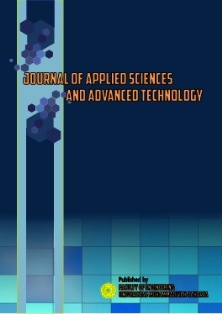Heating Analysis Of Used Cooking Oil Refining Equipment Using Activated Charcoal With A Heating Element Capacity Of 20 Liters / Process
DOI:
https://doi.org/10.24853/jasat.5.3.91-98Keywords:
Purification Electric heating element Cooking oil Activated charcoalAbstract
Cooking oil that is used repeatedly is very harmful to health. The use of cooking oil repeatedly and continuously in the frying process will result in a degradation reaction, thereby reducing the quality of the cooking oil. Therefore, the purification of used cooking oil needs to be done with the aim of making use of consumable oil and to reduce the risks that can endanger health if using used oil repeatedly. The purpose of this research is to find out the heat energy produced by the band heater during the refining process of used cooking oil with activated charcoal. Knowing the effect of band heater power on the heating time of used cooking oil in the refining process. Changing the ratio of oil composition to activated charcoal to visual purification results. This research method uses a comparison between testing with numerical simulations using Ansys. Based on research, it is known that the greater the heating power used, the less time it takes to heat the oil up to 100oC, the time needed for the process of refining used cooking oil is the fastest, namely for 2 hours 30 minutes with a composition of 80%: 20% with the heat flux used 5500 W/m2, and which required a longer time of 4 hours 45 minutes with a composition of 60% : 40% with the heat flux used 3500W/m2. Visually, the best purification results were obtained, namely with a composition of 70% used cooking oil and 30% activated charcoal with a yellow-orange color, while visually the poorer results were obtained with a composition of 80% used cooking oil and 20% activated charcoal with a reddish yellow color. Thus the composition ratio between used cooking oil and activated charcoal affects the results of the refining process, where visually the best composition ratio is 70% used cooking oil and 30% activated charcoal with a stirring speed of 120 rpm. The highest percentage of free fatty acid (BA) reduction in this study was 73.05% and the highest percentage of peroxide value (PV) reduction was 56.88%.Downloads
References
Ariffudin, Satriya Dwi. "Perancangan sistem pemanas pada rancang bangun mesin pengaduk bahan baku sabun mandi cair." Jurnal Rekayasa Mesin 1.02 (2014).
Rahayu, Lucia Hermawati, and Sari Purnavita. "Pengaruh suhu dan waktu adsorpsi terhadap sifat kimia-fisika minyak goreng bekas hasil pemurnian menggunakan adsorben ampas pati aren dan bentonit." Majalah Ilmiah MOMENTUM 10.2 (2018).
Paputungan, R., Nikmatin, S., Maddu, A., & Pari, G. Institut Pertanian Bogor. Mikrostruktur Arang Aktif Batok Kelapa untuk Pemurnian Minyak Goreng Habis Pakai. (2018); Vol. 6, Halaman 4.
Silviana, Widayat, and Faleh Setia Budi. "Rancang bangun alat pemurni minyak jelantah dengan proses adsorbsi."
Zulyo, Muhammad Ardhy, and Elda Melwita. "Adsorbsi pengotor dalam minyak jelantah menggunakan kolom adsorbsi yang dilengkapi elemen pemanas." Jurnal Teknik Kimia 22.4 (2016): 54-60.
Alamsyah, Muhammad, and Ruslan Kalla. "Pemurnian minyak jelantah dengan proses adsorbsi." Journal of chemical process Engineering 2.2 (2017): 22-26.
Samangun, Theresia, David Nasrun, and Taufik Iskandar. "Pemurnian minyak jelantah menggunakan arang aktif dari sekam padi." eUREKA: Jurnal Penelitian Teknik Sipil dan Teknik Kimia 1.2 (2017).
Sodri, Mohammad Ikhsan. "Rancang Bangun Alat Fermentor Kopi Terkendali Menggunakan Pemanas Elektrik Tipe Band Heater."
Qadafi, Mirza. Rancang Bangun Alat Pengontrolan Proses Pemanasan Produksi Biodisel Dari Minyak Jelantah Berbasis Arduino Mega. Diss. 2021.
Rahayu, Lucia Hermawati, and Sari Purnavita. "Pengaruh suhu dan waktu adsorpsi terhadap sifat kimia-fisika minyak goreng bekas hasil pemurnian menggunakan adsorben ampas pati aren dan bentonit." Majalah Ilmiah MOMENTUM 10.2 (2018).
Downloads
Published
Issue
Section
License
COPYRIGHT POLICY
The author(s) of an article published in the Journal of Applied Sciences and Advanced Technology (JASAT) retains ownership of the intellectual property rights in work (s).
PUBLISHING RIGHTS
The author(s) of an article published in the Journal of Applied Sciences and Advanced Technology (JASAT) have unrestricted publication rights. The authors give the Journal of Applied Sciences and Advanced Technology (JASAT) the right to publish the article and designate the Faculty of Engineering Universitas Muhammadiyah Jakarta Publishing as the original publisher of the article.
LICENSING POLICY
JASAT is an open-access journal that follows the Creative Commons Non-Commercial 4.0 International License (CC BY-NC 4.0), which states that:

Under this license, the reusers must give appropriate credit, provide a link to the license, and indicate if changes were made. Users may do so in any reasonable manner, but not in any way that suggests the licensor endorses users or their use.
Please take the time to read the whole license agreement (https://creativecommons.org/licenses/by-nc/4.0/). As long as reusers follow the license conditions, the owner cannot withdraw these freedoms. The following components are included under this license:
 Attribution: Users must provide appropriate attribution, including a link to the license, and indicate whether or not they made any modifications. Users are free to do so reasonably, but not in a manner that indicates the licensee approves of their usage.
Attribution: Users must provide appropriate attribution, including a link to the license, and indicate whether or not they made any modifications. Users are free to do so reasonably, but not in a manner that indicates the licensee approves of their usage.
 NonCommercial: Users may not use the material for commercial purposes.
NonCommercial: Users may not use the material for commercial purposes.












_2.png)


1.png)

2.png)
